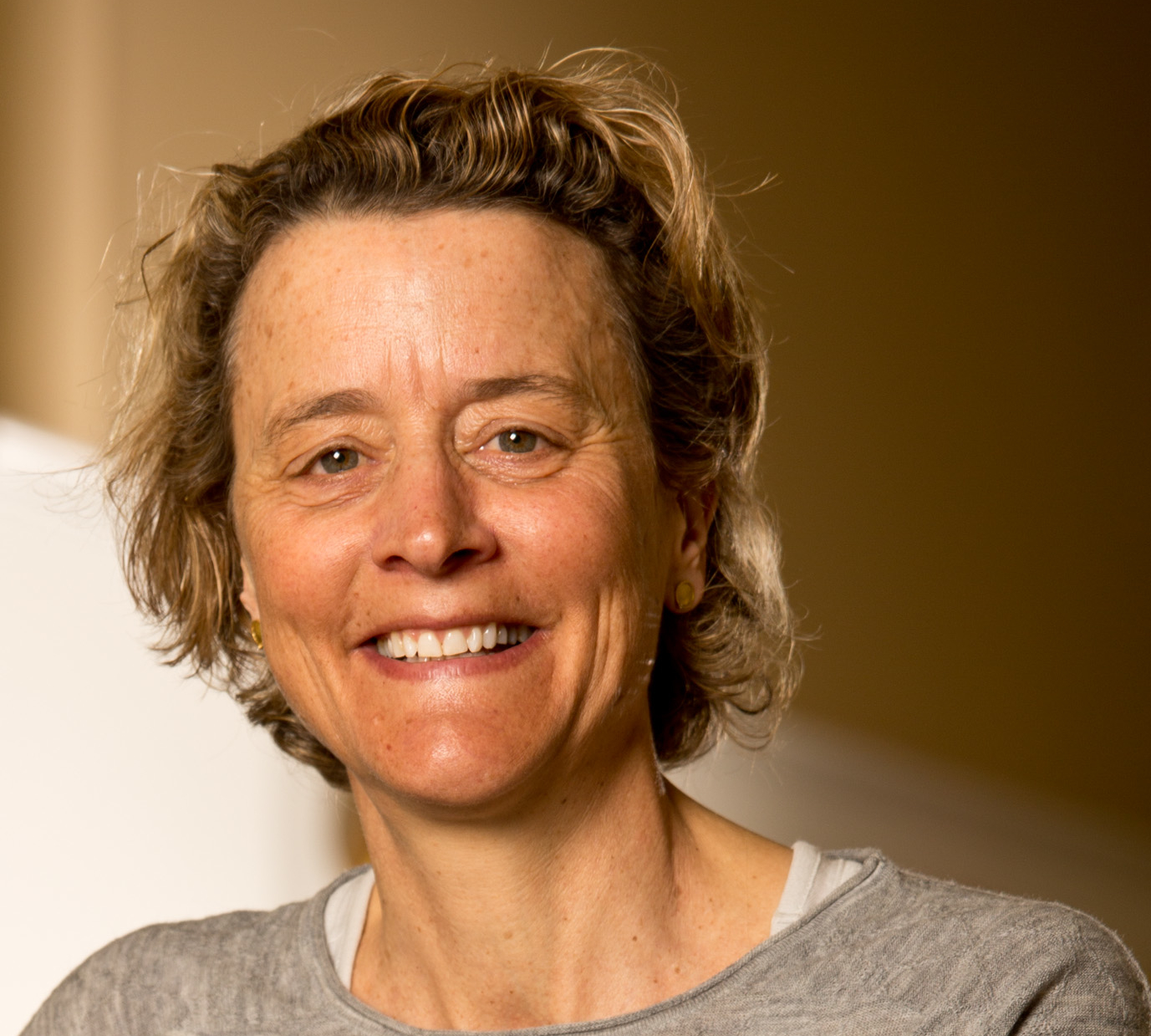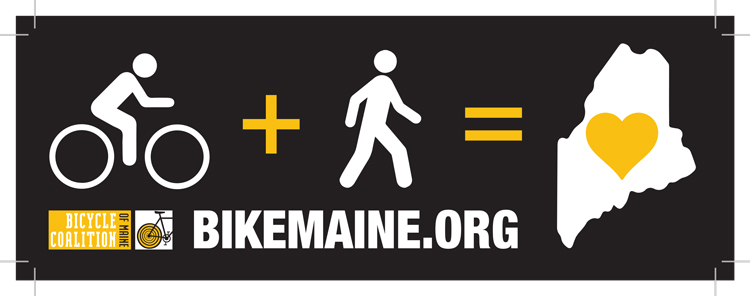 "Whether we’re focusing on safety, law and enforcement, public health, livability, economic development or social equity, walking often overlaps with bicycling."
"Whether we’re focusing on safety, law and enforcement, public health, livability, economic development or social equity, walking often overlaps with bicycling."
That was the realization staff at the Bicycle Coalition of Maine brought to their board at the start of a strategic planning process in 2013. Now, as the organization begins the implementation of its new five-year plan, they have a new multi-modal mission: Making Maine better for bicycling and walking.
According to executive director, Nancy Grant, that wider lens is an exciting shift — that comes with both opportunities and challenges.
In dense, urban areas where critical masses of pedestrians, bicyclists and drivers mix at nearly every intersection, the connections between biking and walking advocacy are easy to see. In a rural state where distances are longer and city centers are smaller the allied interests of people on foot aren't as apparent. So how did the Coalition make that shift? Grant shared the process and some lessons learned.
Making the case for a multi-modal mission
 "At the beginning of our planning process we started by identifying the most significant changes in the national and local bicycle advocacy movement so that we could determine how to best address them in the coming years," Grant (pictured right) wrote in the most recent issue of Maine Cyclist. "The biggest change was clear—that walking has increasingly become intertwined with bicycling in many of our daily work activities, conversations and partnerships."
"At the beginning of our planning process we started by identifying the most significant changes in the national and local bicycle advocacy movement so that we could determine how to best address them in the coming years," Grant (pictured right) wrote in the most recent issue of Maine Cyclist. "The biggest change was clear—that walking has increasingly become intertwined with bicycling in many of our daily work activities, conversations and partnerships."
With that in mind, a clear question came to the forefront: "Should the Bicycle Coalition of Maine change its mission to explicitedly include walking?" That important query led to months of research and consideration. What would be the pros and cons of changing the organization's mission? Would there be additional financial costs associated with adding walking as a central issue area? As Grant wrote in Maine Cyclist, there were a number of key issues that weighed in the favor of specifically incorporating pedestrians into the Coalition's work.
- "Bicycling has clearly expanded beyond a recreation and/or fitness-based activity to become a primary mode of transportation for many, especially in urban areas. Cyclists have far more in common with pedestrians than with motor vehicles. Furthermore, both bicyclists and pedestrians are extremely vulnerable when it comes to distracted motorists, carelessness or aggression.
- Supporting safer and increased walking has immense public health benefits for all Mainers, including the underserved and aging populations who don’t own cars or are no longer able to drive. Additionally, walking is more accessible for many of these hard-to-reach groups.
- Almost every Mainer is by definition a walker. Even those who 'drive everywhere,' still get out of their cars to walk to their home, into their workplace and into shops and businesses. There are many Mainers who care about livability, active transportation and vibrant communities who would not identify themselves as bicyclists, but would count themselves as a pedestrian.
- Maine is currently the oldest state in the nation with 18% of our residents above the age of 65. Ensuring that Mainers can age in place, and remain mobile even after they’ve given up their car keys, will result in a range of economic and quality of life benefits. Safe and accessible walking is increasingly important in this state, especially as our aging population grows.
- In our increasingly polarized society, the 'us against them' context is used frequently by cyclists and non-cyclists. There are many Mainers who don’t identify with our goals for bicyclists but are far more receptive when they hear that we also work for safer walking. Including walking in our mission may provide a bridge to begin new conversations that would not have otherwise occurred."
After careful consideration, the organization officially added walking to its mission in April. "We will always be first and foremost a bicycling organization," Grant wrote. "The Coalition has been working for better biking since 1992 and that will continue to be our primary focus. At the same time, we feel that we can enlist and impact more Mainers by including walking in our mission and are proud of the work we do around pedestrian issues. We truly believe that we can make Maine better for bicycling AND walking."
Moving forward and lessons learned
 It's important to note, of course, that walking has always been part of the Coalition's work, from its robust Safe Routes to School program to its Bicycle & Pedestrian Safety Education Program. But, now that it's been a few months, we checked back with Grant on what lessons she learned from the process of expanding the mission — and how the transition to an intentionally multi-modal organization has progressed.
It's important to note, of course, that walking has always been part of the Coalition's work, from its robust Safe Routes to School program to its Bicycle & Pedestrian Safety Education Program. But, now that it's been a few months, we checked back with Grant on what lessons she learned from the process of expanding the mission — and how the transition to an intentionally multi-modal organization has progressed.
For Grant, one of the biggest challenges was steering the board in a new direction.
"Our board, like most boards, is much more conservative than our staff," she says. "They're significantly older and almost all started biking for fitness or recreation. Many of them ride long distances but jump in the car to drive short distances for coffee, work or errands. Few of them think of themselves as pedestrians and there are only a few towns in Maine where there is significant walking infrastructure."
"Most of our board were unfamiliar with the social equity argument for bicycling and felt that our membership, especially our bigger donors, were all about biking and wouldn't understand the inclusion of walking," she adds. "Thankfully, our board is very willing to listen to staff and be pulled along. We needed to explain the national trends in detail and convince the board that there were compelling reasons to include walking."
Not surprisingly, the reception from members has been... mixed.
"Some totally get it," Grant says. "Some missed the announcement in our April print newsletter and were surprised when we included an image of a walker on our new BCM bumper sticker. Maine is a very rural state and biking for transportation is not as accessible as it is in more urban states. Biking for recreation and fitness is more the norm. For those people who really identify as bicyclists, the addition of pedestrians in our mission isn't obvious or compelling."
But the victories for biking AND walking are already beginning to roll in. For instance, last month, the Coalition celebrated the passage and governor's signing of a new state safety bill that, Grant says, is "as much about walking as it is about biking."
"Much of what we do with walking we had already been doing for years," she says. "One of the reasons we included walking in our mission was to acknowledge that work. In the last year, we've really ramped up our Walking School Bus (WSB) programming. We received a $200,000 five-year grant from Maine CDC to develop and deliver the optimum WSB programming for a rural state like Maine. It's been very successful."
And Grant forecasts that such successes will bring the current skeptics squarely into the pedestrian camp in coming months.
"I'm confident that as they pay more attention to and learn more about the issues involved, they'll be more interested," she says. "It will certainly help if we get some new partners and donors because of our wider focus. It will also help when our walking work is recognized by the public."
Learn more about the Coalition at www.bikemaine.org!

